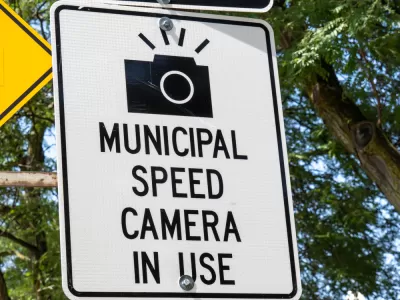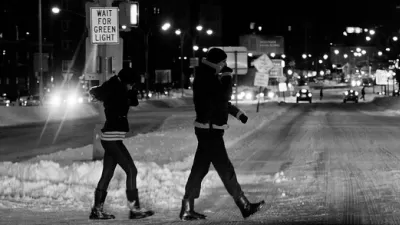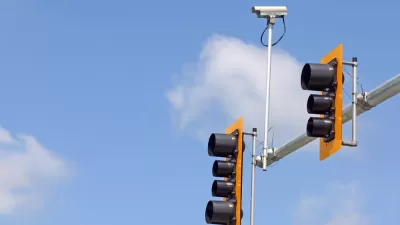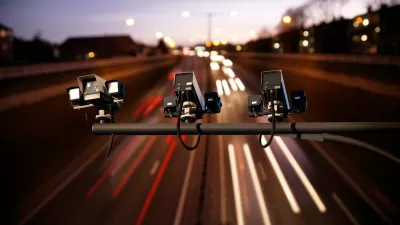File under: not a cash grab.

The New York Department of Transportation (DOT) has crunched the numbers and has the data to prove it: speed cameras reduce unsafe speeds.
Last year, the city of New York was finally allowed by the state to run speed cameras on specific corridors 24 hours a day and seven days a week. The around the clock camera enforcement is controversial with drivers and government watchdogs, but popular with traffic safety advocates.
Now there is evidence that the 24-7 speed cameras have produced safer conditions on the street by drastically reducing the average speeds of drivers.
“The shift to around-the-clock automated enforcement since Aug. 1, 2022 has led to significant reductions in speeding — including 96 percent on Manhattan's Houston Street, 74 percent on North Conduit Boulevard near JFK Airport, and 68 percent on the Bronx's treacherous Bruckner Boulevard,” reports David Meyers, sharing insight into date recent released by DOT.
The data would seem to provide strong evidence that speed cameras are more than just a cash grab—a charge leveled by many speed camera opponents.
New York’s speed cameras became the character of the day on social media recently when famous television show creator David Simon complained about the cameras busting him for speeding.
Meyers again reiterates the case for automated enforcement of speeding in the source article, linked below:
Speeding is deadly, and the chances of being killed by a driver increase with driver speed. Speed was a reported factor in nearly one-third of deadly crashes in the U.S. in 2021, according to the Federal Highway Administration.
The New York City DOT is far from the first agency to see evidence of the safety benefits of speed cameras, of course. Similar data was also published in Ottawa earlier this year.
FULL STORY: Success: Drivers are Slowing Down on Streets with 24/7 Speed Cameras

Alabama: Trump Terminates Settlements for Black Communities Harmed By Raw Sewage
Trump deemed the landmark civil rights agreement “illegal DEI and environmental justice policy.”

Study: Maui’s Plan to Convert Vacation Rentals to Long-Term Housing Could Cause Nearly $1 Billion Economic Loss
The plan would reduce visitor accommodation by 25% resulting in 1,900 jobs lost.

Planetizen Federal Action Tracker
A weekly monitor of how Trump’s orders and actions are impacting planners and planning in America.

Waymo Gets Permission to Map SF’s Market Street
If allowed to operate on the traffic-restricted street, Waymo’s autonomous taxis would have a leg up over ride-hailing competitors — and counter the city’s efforts to grow bike and pedestrian on the thoroughfare.

Parklet Symposium Highlights the Success of Shared Spaces
Parklets got a boost during the Covid-19 pandemic, when the concept was translated to outdoor dining programs that offered restaurants a lifeline during the shutdown.

Federal Homelessness Agency Places Entire Staff on Leave
The U.S. Interagency Council on Homelessness is the only federal agency dedicated to preventing and ending homelessness.
Urban Design for Planners 1: Software Tools
This six-course series explores essential urban design concepts using open source software and equips planners with the tools they need to participate fully in the urban design process.
Planning for Universal Design
Learn the tools for implementing Universal Design in planning regulations.
Caltrans
Smith Gee Studio
Institute for Housing and Urban Development Studies (IHS)
City of Grandview
Harvard GSD Executive Education
Toledo-Lucas County Plan Commissions
Salt Lake City
NYU Wagner Graduate School of Public Service





























